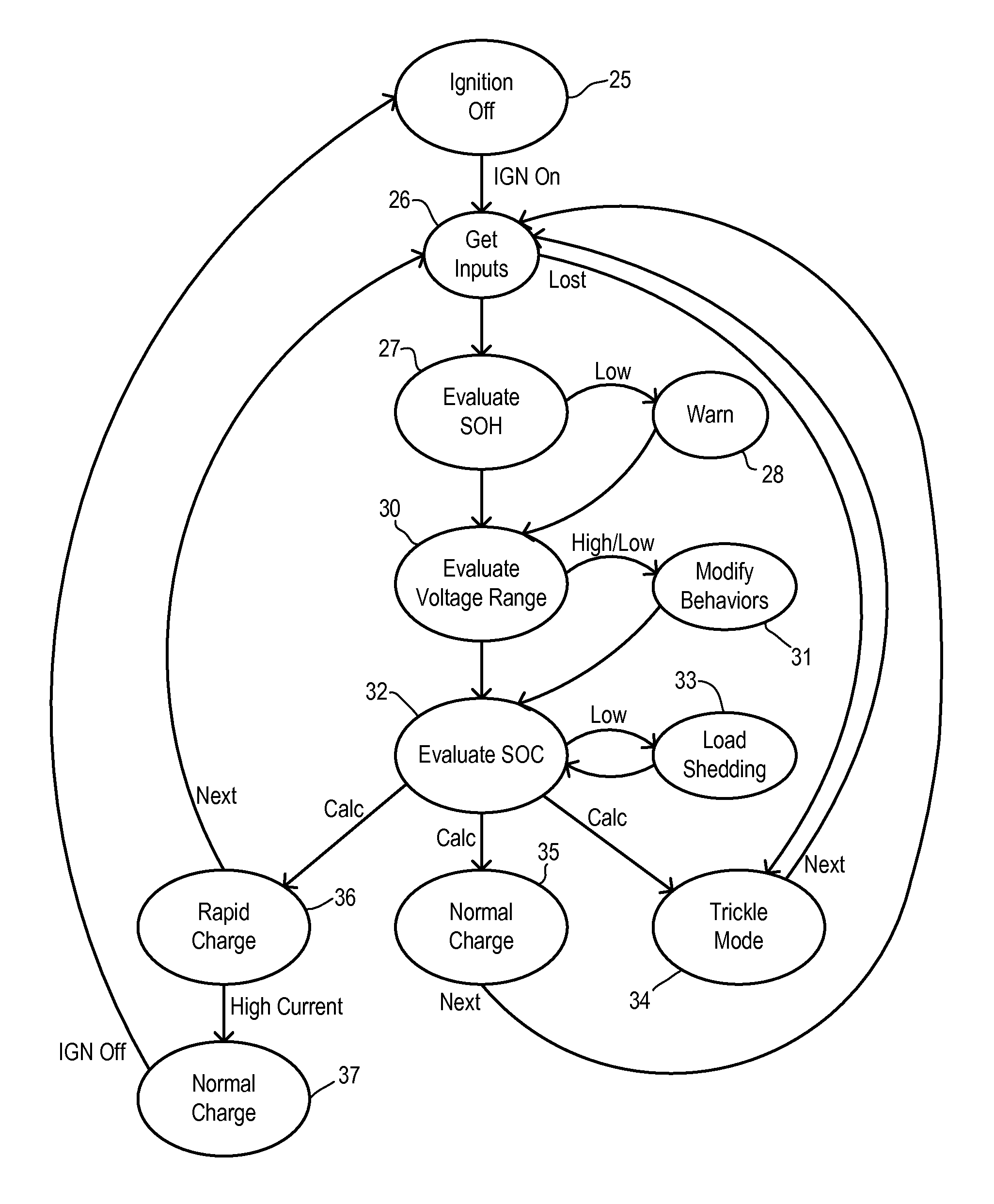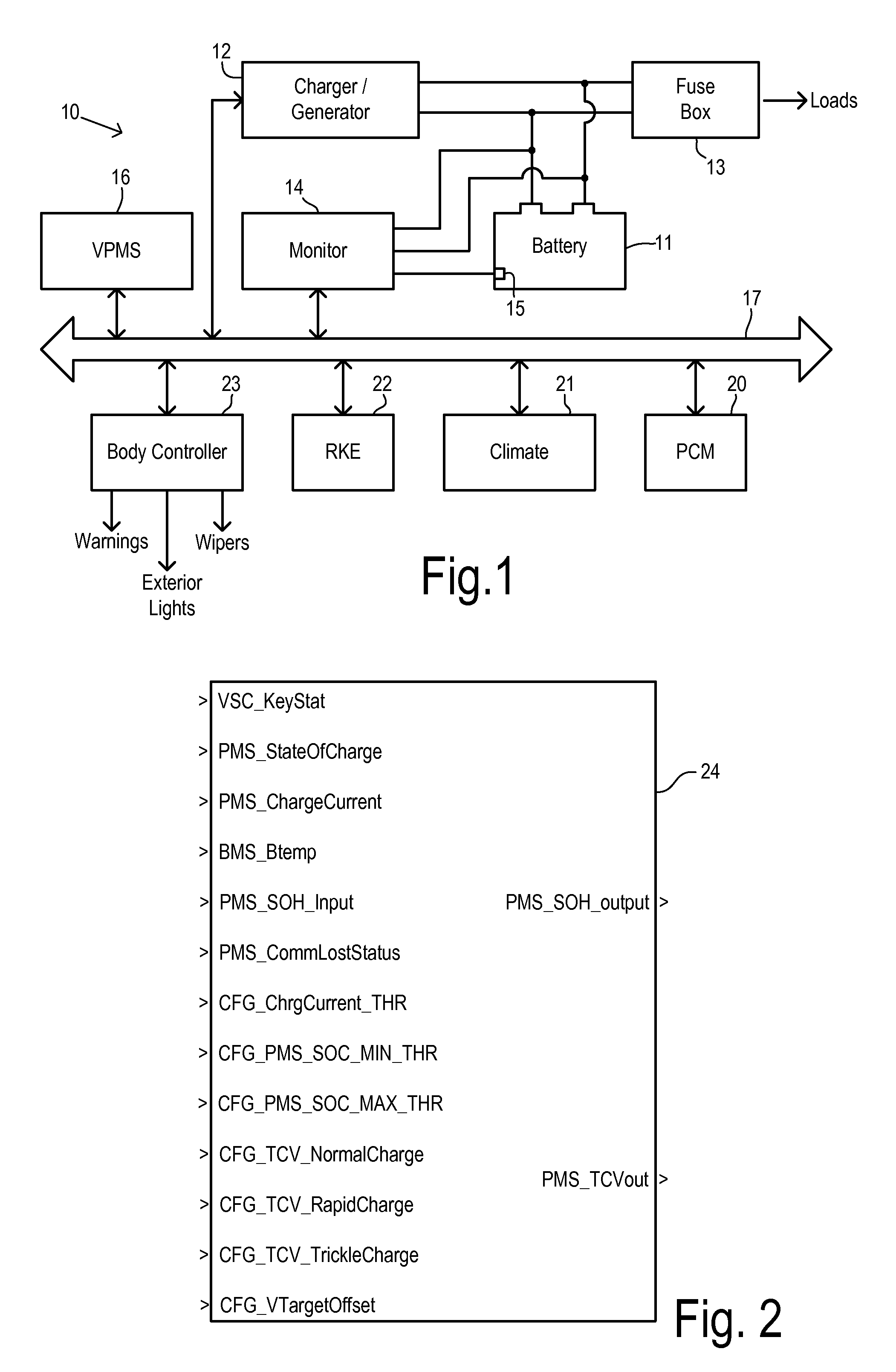Vehicle power management system
a power management system and vehicle technology, applied in hybrid vehicles, instruments, transportation and packaging, etc., can solve the problems of complex systems that dynamically, time-consuming and costly efforts to develop these complex systems, and systems that require significant data processing capacity, so as to reduce the charge voltage
- Summary
- Abstract
- Description
- Claims
- Application Information
AI Technical Summary
Benefits of technology
Problems solved by technology
Method used
Image
Examples
Embodiment Construction
[0015]A main goal of the present invention is to determine a target charge voltage which is then communicated to a charging source for delivering a charging voltage and charging current to the battery. Many prior art algorithms for managing vehicle power have sought to charge the battery in a way that maximizes battery life and performance. The present invention may preferably set the target charge voltage in a way that instead maximizes fuel efficiency. Thus, the manor in which the target charge voltages are selected may allow for undercharging or overcharging the battery during certain conditions of vehicle operation. In order to ensure accurate charging control, battery status is classified according to three recharging modes each with a different predetermined target charge voltage. A selected target voltage is compensated for battery temperature and for known wire resistances. In addition to the selection of target charge voltage, the present invention may provide optional enha...
PUM
 Login to View More
Login to View More Abstract
Description
Claims
Application Information
 Login to View More
Login to View More - R&D
- Intellectual Property
- Life Sciences
- Materials
- Tech Scout
- Unparalleled Data Quality
- Higher Quality Content
- 60% Fewer Hallucinations
Browse by: Latest US Patents, China's latest patents, Technical Efficacy Thesaurus, Application Domain, Technology Topic, Popular Technical Reports.
© 2025 PatSnap. All rights reserved.Legal|Privacy policy|Modern Slavery Act Transparency Statement|Sitemap|About US| Contact US: help@patsnap.com



